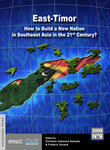East-Timor
How to Build a New Nation in Southeast Asia in the 21st Century?
 Dirigé par Christine Cabasset-Semedo et Frédéric Durand
Dirigé par Christine Cabasset-Semedo et Frédéric Durand
IRASEC, Bangkok
mai 2009, 304 p.
ISBN : 978-611-90282-0-3
![]() English text
English text
This book is the direct outcome of a panel on Timor-Leste entitled « How to build a new nation ? » and organized in September 2007 in the framework of the EUROSEAS Congress in Naples. Among the more than 40 panels held, Timor-Leste’s had been remarkably dense, with 20 presentations given by American, Australian, Brazilian, East-Timorese, French, German, Portuguese and Spanish researchers. At the time of this congress, the major event of 2006, which two years after continued to be called “the crisis”, was still foremost in people’s minds, conversations, and researches. While other events or forewarning episodes had taken place before that date, no doubt that the crisis of 2006/2007 had finally prove to be a turning point, for the country itself, and maybe even more so for international actors.
Though presented at first as a United Nations’ success story, especially when the territory was under UN management from October 1999 (withdrawal of the Indonesian army) until 20 May 2002 (independence of the country), the unity of Timor-Leste was then in peril, deceiving the expectations that had prevailed during the resistance years. Its climax was the conflict between “those from the West” and “those from the East” (“Loromonu-Lorosae” or Firaku-Kaladi), and a violence which caused a wave of internal refugees (around 150,000 IDP- Internally Displaced People). Beyond the causes and effects of this political and military crisis which had then spread to civil society, the “crisis” had also directly or indirectly revealed a certain number of dysfunctions, notably the deficiencies of the UN preparations of independence and of the capacity of East Timorese governing bodies to manage and organize the country.
—
Table des matières
Introduction
Part 1 – A difficult transition toward a new nation
- Multidimensional Identity Construction : Challenges for State-building in East Timor (Nuno Canas MENDES)
- Negotiating Statehood and Humanitarian Assistance in Timor-Leste : an incompatible pair ? (Christine SCHENK)
- Reconciliation in Timor-Leste and the Role of the Media : The Casa de Produção Audiovisual (Henriette SACHSE)
Part 2 – Socio-cultural identities and factors in question
- Translation in Crisis, Crisis as Translation (Paulo Castro SEIXAS)
- "Ema Lorosa’e", "Ema Loromonu" : Identity and Politics in Timor-Leste (David HICKS)
- Nation building at the village level : First the house, then the Church and finally a modern state (Alexander LOCH)
- Denying peripheral status, claiming a role in the nation : sacred words and ritual practices as legitimating identity of a local community in the context of the new nation (Lúcio SOUSA)
Part 3 – Politics, legitimacy and electoral processes
- Elections and the Social Dimensions of Democracy, Lessons from Timor-Leste (Rui Graça FEIJO)
- Suffering, Dignity and Recognition. Sources of political legitimacy in independent East Timor (Kelly SILVA)
- Crisis and Nation-building in Timor-Leste (Sara GONZALEZ DEVANT)
Part 4 – Tracks for the construction of the future
- Crises and Uncertainties as a Sign of a Lack of Timorese Project of Society (Frédéric DURAND)
- Human Safety, Security and Resilience : Making Narrative Spaces for Dissent in Timor-Leste (Jacqueline Aquino SIAPNO)
- Thinking about tourism in Timor-Leste in the era of sustainable development. A tourism policy emerging from grass-roots levels (Christine CABASSET)
Chronology : 1974-2009
Glossary and list of acronyms
Bibliography
Contributors











